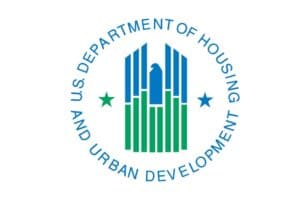A new Government Accountability Office report outlines 11 priority open recommendations for HUD as of June 2022. The 11 priority recommendations fall into the following six major areas:
- Disaster recovery barriers. Many disaster survivors face barriers in accessing disaster assistance programs and resources. We made two recommendations to HUD to work with the Federal Emergency Management Agency and Small Business Administration to develop and implement an interagency plan for obtaining information to identify barriers to disaster recovery access and disparate outcomes. Doing so would improve HUD’s ability to address barriers to access and disparate outcomes for disaster assistance programs.
- Real Estate Assessment Center’s (REAC) physical inspection process. HUD’s inspections continue to find properties in poor physical condition and with life-threatening health and safety issues. And Congress and the media raised concerns about properties that may have received inspection scores not consistent with their physical condition. In March 2019, we found several weaknesses in REAC’s physical inspection process and recommended a comprehensive review of the process. Implementing this recommendation would improve the identification of physical deficiencies at HUD multifamily properties (including public housing).
- Ginnie Mae’s risk management and staffing-related challenges. Ginnie Mae has faced challenges with its ability to oversee significant growth in its operations. In April 2019, we made three recommendations to Ginnie Mae to evaluate its (1) contractor use, (2) contract administration and (3) the costs and benefits of options to revise compensation structures for employees. Doing so would strengthen Ginnie Mae’s capacity to respond to its increasing volume of business and enhance management of contractors and budgets for in-house staff.
- Processes to address lead paint hazards. Exposure to lead paint hazards can cause serious harm to children under six years old. In a June 2018 report, we made two recommendations for HUD to enhance compliance monitoring and enforcement of lead paint regulations and a third recommendation to request authority from Congress to amend the Housing Choice Voucher program inspection standard. Implementing these recommendations would improve HUD’s efforts to identify and address lead paint hazards in low-income housing.
- Oversight of Moving to Work. The Moving to Work demonstration gives participating public housing agencies the flexibility to change rent calculations and other requirements for tenants. However, organizations that advocate on behalf of residents and others raised questions about the lack of information about the demonstration’s effects on tenants. We recommended HUD develop and implement a plan to analyze the effects of program flexibility on tenants. Doing so would enhance HUD’s oversight of Moving to Work.
- IT management. HUD has long experienced shortcomings in its IT management capability. For example, while HUD has reported governance-related cost savings and operational efficiencies, the data supporting such reports were not always accurate, consistent or substantiated. We recommended that HUD develop a process for identifying and tracking data on cost savings and efficiencies resulting from IT investments and governance decisions. Doing so would improve HUD’s ability to monitor the outcomes of its IT governance activities, achieve potential cost savings and operational efficiencies, and provide assurances that investments are delivering expected benefits.
